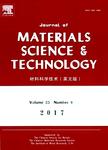Study of Debond Fracture Toughness of Sandwich Composites with Metal Foam Core
Study of Debond Fracture Toughness of Sandwich Composites with Metal Foam Core作者机构:Center for Composite Materials Harbin Institute of Technology Harbin 150001 China
出 版 物:《Journal of Materials Science & Technology》 (材料科学技术(英文版))
年 卷 期:2009年第25卷第5期
页 面:713-716页
核心收录:
学科分类:080503[工学-材料加工工程] 0806[工学-冶金工程] 0817[工学-化学工程与技术] 08[工学] 0805[工学-材料科学与工程(可授工学、理学学位)] 0703[理学-化学] 0802[工学-机械工程] 0702[理学-物理学] 0801[工学-力学(可授工学、理学学位)]
主 题:Interfacial fracture toughness Strain energy release rate Tsai-Hill failure criterion Cohesive zone model
摘 要:Two types of experiments were designed and performed to evaluate the adhesive bond in metal foam composite sandwich structures. The tensile bond strength of face/core was determined through the flatwise tensile test (FWT). The test results show that the interfacial peel strength is lower than the interlaminar peel strength in FWT test. The mode I interracial fracture toughness (GIC) of sandwich structures containing a pre-crack on the upper face/core interface is determined by modified cracked sandwich beam (MCSB) experiment. It is found that the crack propagates unsynchronously on the two side of the specimen and the propagation of interfacial debonding always stays on the face/core interface during the MCSB tests. In order to simulate the failure of metal foam composite sandwich structures, a computational model based on the Tsai-Hill failure criterion and cohesive zone model is used. By comparing with experiment results, it can be concluded that the computational model can validly simulate the interracial failure of metal foam composite sandwich structures with reasonable accuracy.



